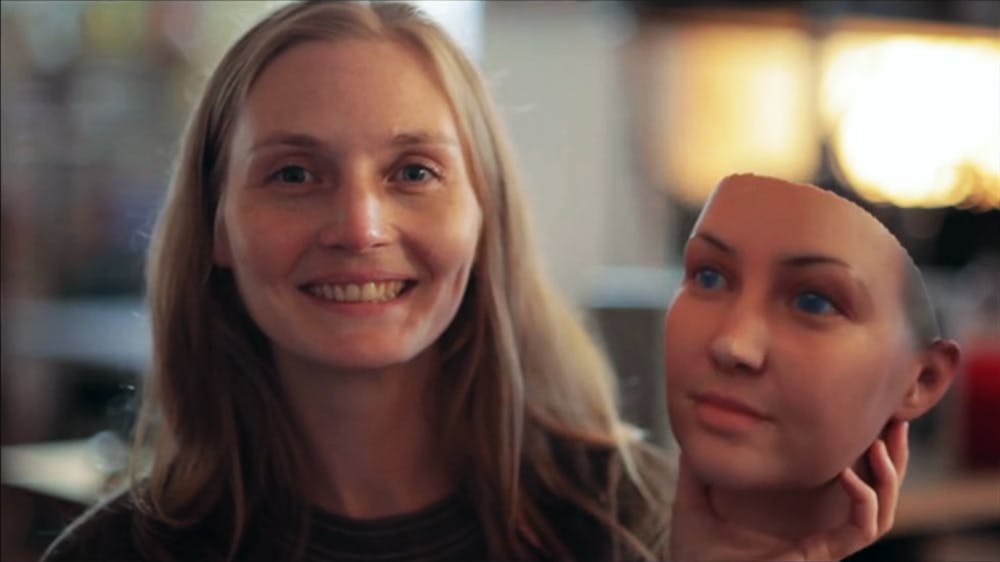What do the words “transdisciplinary artist” evoke to you? Last Monday, Heather Dewey-Hagborg, self-described “information artist,” gave a public lecture in the Johnson Memorial Building about how she uses art as an avenue for active inquiry into the ethics of various kinds of modern-day technologies, like wire-tapping and DNA sequencing.
A quick search on the Internet reveals that Dewey-Hagborg is not the kind of artist that works in a studio; she spends her time everywhere except the studio. For her most widely-publicized art project – called “Stranger Visions” – for instance, she collected hair samples and cigarette butts on the streets, performed DNA sequencing in a lab, and appeared on the cover page of the magazine, “Government Technology.”
She nearly had to appear in court as well because, according to the NewScientist.com, she may have broken the law by carrying out genetic testing without the owner’s consent.
However, this is precisely the reason why she is successful: her art exposes people to aspects of technological advancements that they had no idea could be a threat to their privacy at all. Besides the 3D sculptures that she made from random DNA traces, some of her previous projects include reconfiguring speech collected from a train station using speech recognition systems, computer algorithms and “elgooG,” a search engine that functions like Google except that it prioritizes the least popular results.
Her politicized creative intent has enabled her to take her art far beyond the confines of an art gallery. The Woodrow Wilson International Center for Scholars made her an “expert” in synthetic biology, CNN invited her for a live interview in 2013, the Wall Street Journal, the New Yorker, BBC World News and BBC News Magazine have all published articles about her, and the list goes on.
A graduate of Bennington College, a small liberal arts college in Bennington, Vt., Hagborg’s career path is one that should not be too far from any liberal arts undergraduates’ imagination. Professor Sanford Mirling, in his introductory speech for the artist, described her as a great example of an artist with a liberal arts background whose work “breaches [the] gaps of Science and Art”.
“I tend to think of the stuff I’m doing as projects rather than artworks,” Dewey-Hagbog said at the beginning of her talk. “They tend to be sprawling and ongoing, and I never necessarily know when they’re done, or even when they properly began. They just sort of all blend into each other.”
She said she usually starts off each project with a question. To her, art is about asking questions and researching and experimenting. At the end of the talk, she encouraged the undergraduates in the audience to become more engaged with topics such as new technologies, which “are going to have major repercussions on our culture in the coming decade.”
“Now is the time to question these things … [the undergraduates of Middlebury College] are uniquely poised to examine these intersections [between technology and culture],” the artist said.
When someone in the audience asked Dewey-Hagborg what her next project is, she replied, “it is very political and tactical,” she paused, “but it’s a secret!” She smiled the sly smile of someone who is proud of her work and the heated debates she knows it will stir.
Artist Shows How New Biotechnology Reimagines Art

Comments


